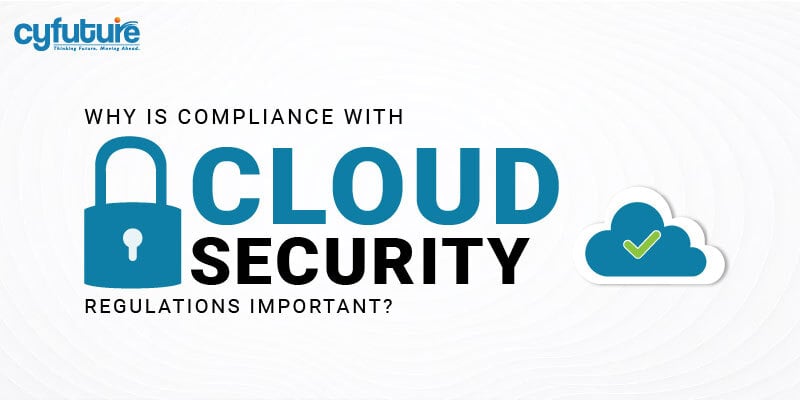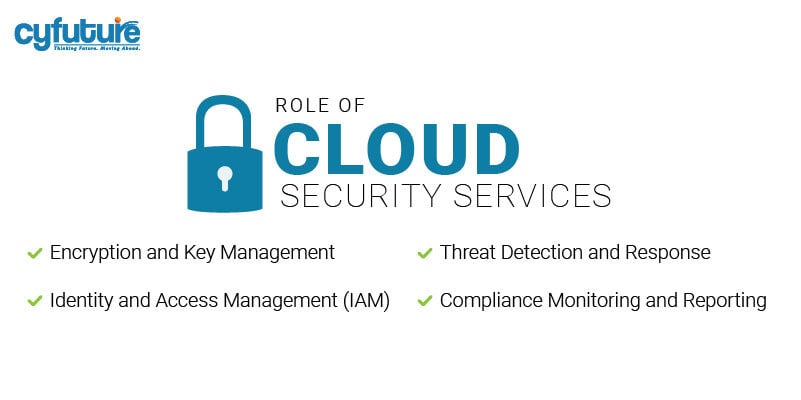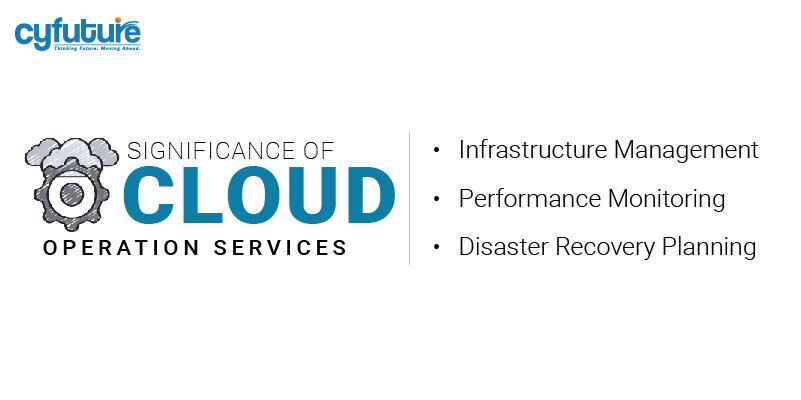-
Get Cloud GPU Server - Register Now!
Toggle navigation

The use of cloud computing has become vital for businesses in today’s age as it offers unmatched scalability and cost efficiency that is crucial, for companies worldwide.
In contrast to that point of view is the fact that businesses transitioning to cloud services must adhere to a network of regulations concerning security measures and safeguarded information privacy and integrity in today’s cloud-focused environment—meeting these requirements is more than just following the law; it’s, about maintaining the availability and confidentiality of data.
With an emphasis on the function of cloud operation and security services in protecting corporate assets, this comprehensive article delves deeply into the critical importance of following cloud security guidelines.
However, let’s take a look into a few stats and data before delving deep.
Now, let’s delve into the deep knowledge pool!
Cloud computing opens all new avenues for any organization to operate in ways that were unimaginable earlier. That means an organization can grow much faster than ever and come up with ideas much quicker. However, on the flip side, the transformation can be quite complex and may be fraught with lots of regulatory issues that businesses will have to deal with to make sure they are compliant with relevant data protection laws and industry standards.
Cloud security standards are purposed to protect sensitive information from the activities of hackers, breaches, and other kinds of malware activities. To that end, the constraints vary concerning the type of data concerned, the industry involved, and the location. As a case in point, the General Data Protection Regulation of the European Union strictly limits the collection, use, and storage of personal information. Along these lines, US law titled the Health Insurance Portability and Accountability Act or HIPAA lays out rules on how to safeguard electronic health information.
That would mean maintaining these conditions is not only necessary but also legally binding; inability to comply with such may lead to consequences of serious aspects. Some of the problems at which enterprises arrive due to cloud security requirements being overlooked include fines, lawsuits, damage to brand reputation, and so on. Apart from this, there is a loss of customers’ trust, usually quite difficult to regain.

Thus, cloud security services help businesses be compliant with cloud security regulations and remain compliant. There is a wide variety of equipment and technology used to protect the cloud computing environment from various types of cyberattacks. This would include:
Cloud security services generally adopt the encryption method to safeguard the data while in motion or at rest. Encrypting sensitive information ensures that even if unauthorized people intercept it, they cannot read or utilize it.
IAM solutions define who has access to cloud resources and data. MFA stands for Multi-factor authentication. In such a way, an organization can reduce the likelihood of unauthorized access to confidential information with the help of stringent access controls and multi-factor authentication.
It requires sophisticated threat detection and response capabilities to identify possible security risks and take control in real-time. Common among the services of cloud security are automated monitoring and warning systems. These systems enable a business to respond to intrusions before they can do significant damage.
It would therefore require continuous monitoring and reporting to ensure that cloud security regulations are upheld. Security services for cloud provider organizations with means for reporting that attest to regulatory compliance, and routine analysis of compliance posture.
Cloud Operation Services come in to ensure daily operational activities of cloud environments are observed and enhanced, while Cloud Security Services work towards the protection of data and resources. These services are thus crucial in ensuring the security, reliability, and regulatory compliance of cloud infrastructures.

The services of cloud operations also include a wide range of activities that comprise disaster recovery planning, performance monitoring, and management of cloud infrastructure. It provides very critical services related to cloud security and compliance because best practices are guaranteed while setting up and managing the cloud resources.
Underlying infrastructure management for making the cloud environments work is included in cloud operation services. This includes the creation and setup and virtual machines and storage and networking resources. Proper setting up and securing these resources helps organizations, in the case of some Cloud Operation Services, to follow some security regulations of the cloud.
Security-related issues identification and fixation require monitoring of performance related to cloud resources. Advanced monitoring technologies are used by the Cloud Operation Services to monitor the operation of the cloud environment to identify those anomalies that may present a security risk.
A proper disaster recovery plan, in place, keeps the companies up and running and provides continuity of operations with the least downtime in an event where the security of the firm is breached along with other catastrophic events. The companies can avail of services offered by cloud operating services to design and implement plans for disaster recovery that fulfill the requirements legally.
The long-term effects of a cloud security policy breach can be disastrous. Other corporate consequences of cloud security policy breaches also include hefty fines and litigation, in addition to reputational losses for the companies at large. In some cases, if restrictions are violated, company permissions may be revoked or it might be restricted to operate in a particular market.
All the regulatory bodies are free to enforce great financial fines against those organizations that do not take adequate cloud security measures. For example, under the GDPR, an organization may be fined up to 4% of their annual global revenue or €20 million-whichever is greater for lack of compliance. These fines make for a good deterrent and can affect an organization’s economic position massively.
Apart from fiscal penalties, non-compliance with cloud security regulations can also lead to litigations by affected individuals or entities. The litigation may be pretty costly hence aggravated fiscal implications of non-compliance.
In this digital day and age, reputation means everything. If some organizations suffer a data breach or any other security incident, then it is because they have failed to address certain cloud security regulations, which in turn is a loss of customer and stakeholder trust. Once the trust is compromised, it takes years to rebuild, and in many instances, it is irrecoverable.
Besides these, operational disruptions may be a consequence of cloud security regulations not being conformed to. Sometimes, organizations may be forced by the regulatory body to suspend operations until such a time that they can prove conformance, leading to massive losses from considerable time being wasted. Generally, non-conformity can indeed lead to the loss of important licenses or certifications that a company would need to operate in specified industries or regions.

From the foregoing, achieving and maintaining compliance with cloud security regulations must necessarily be part of the best priorities of an Organization. The said approach, therefore, needs to be strategic and thus cover Cloud Security Services and Cloud Operation Services, respectively.
A sound compliance strategy would commence with the in-depth evaluation of applicable regulatory imperatives as related to its cloud environment. To put it simply, it needs to know what regulatory laws and standards are out there that have something to say about data protection, data privacy, and data security in these regions and industries.
Once the organization has determined what regulatory requirements it will need to comply with, it must then create a detailed compliance plan, which would outline the steps that must be executed not only to achieve compliance but to maintain it as well. In such a plan, the following should be inducted:
Carry out a risk assessment to identify potential security threats and vulnerabilities in the cloud environment, keeping in mind the applicable regulatory requirements for the concerned organization.
Encryption, access controls, threat detection, and compliance monitoring will be implemented based on the identified regulatory requirements of various security controls.
Educate employees about the need to comply with regulations in cloud security and provide them with the needed training to keep up with best security practices.
Compliance with cloud security regulations is not a one-time effort; it needs continuous monitoring and improvements. An organization should be continuously reviewing its compliance posture, making necessary adjustments to security controls and processes.
Organizations must apply themselves in ensuring the realization and maintenance of compliance by leveraging the capabilities and knowledge base of the Cloud Security Services and Cloud Operation Services that provide tools and technologies to protect the cloud environments, manage day-to-day operations, and maintain compliance requirements of the regulatory bodies.
With Cloud Security Services, the organization secures its cloud environments from different types of cyber threats by providing the essential security controls required to set up their cloud environments, including encryption, identity and access management, and threat detection. Such support is vital in the compliance of cloud security regulations.
It is for this reason that cloud operation services are generally very fundamental in managing and optimizing cloud environments. It provides your organization with a setting and management of cloud resources based on best practices that will go a long way in ensuring adherence to regulatory requirements.
Besides leveraging the Cloud Security and Operation Services, organizations can benefit from third-party audits. These audits present an independent view of compliance posture and might show areas for improvement. Most regulatory bodies demand third-party audits to be included as part of compliance. This could give good insights into the security and compliance practices of an organization.
The evolutionary changes in cloud technology will also drive further evolution in the regulatory landscape. This suggests that organizations should go hand in glove with changing regulations to continuously update their compliance strategies to address emerging and new threats. It calls for a proactive approach: stay informed about changes to cloud security regulations and adopt new technologies and best practices as they become available.
Several emerging trends are likely to shape the future of cloud compliance in security. These include:
Zero Trust is a security model based on the assumption that nobody inside or outside the organization-should be trusted by default. This kind of model calls for constant verification of user identities with tight access control; thus, it could be one of the efficient approaches toward ensuring compliance with the regulations of cloud security.
Increasingly, AI and machine learning technologies are being brought to cloud security. These technologies analyze vast amounts of data for the identification of possible security threats, automation of compliance monitoring, and reporting.
The approach of privacy-by-design is thus based on embedding privacy and data protection measures throughout the design and architecture process in cloud systems. That means compliance with regulations concerning the protection of data would form a feature of the design right from its inception.
The nature of the regulatory landscape is that of being dynamic, and thus organizations must always be ready for its implementation by new regulations and changes. In other words, it means being on top of the changes in cloud security requirements and adapting compliance strategies to the shift.
Engage with the regulatory body and industry groups for timely updates on developments in compliance regarding cloud security. Involvement in industry discussions and keeping abreast of regulatory changes can help ensure that their compliance strategy is informed and current.
In a world where knowledge holds value akin to currency worthiness adhering to cloud security protocols is not just obligatory under the law but a vital component of a business strategy as well. Neglecting these guidelines could result in penalties, legal consequences, and lasting damage to a company’s reputation. Moreover, compliance might lead to disruptions, in operations that put the survival of the business at risk.
By using Cloud Security Services and Cloud Operation Services businesses can protect their cloud systems from online threats ensure the security and confidentiality of their information and comply with legal requirements. These services provide the resources and technology to manage the complex regulatory landscape and meet standards, in a cloud-centric setting.
In the realm of cloud technology evolution; organizations must regularly refine their compliance approaches to address emerging threats effectively and adapt proactively to safeguard their interests and uphold their standing, in the digital age.
In addition to working with their cloud service providers, businesses may implement a strong security architecture and conduct regular risk assessments.
Ensuring data privacy in several jurisdictions, managing complex compliance requirements, and staying up with evolving regulations are all difficult tasks.
Risk evaluations, security tools and services, and compliance certifications are all provided by cloud service providers.
Legal liabilities, fines, data breaches, and damage to one’s reputation are all possible outcomes of non-compliance.
Cloud service providers and businesses are both accountable for compliance.
Organizations seldom can fully transfer liability, even though cloud service providers usually have contractual obligations relating to security.